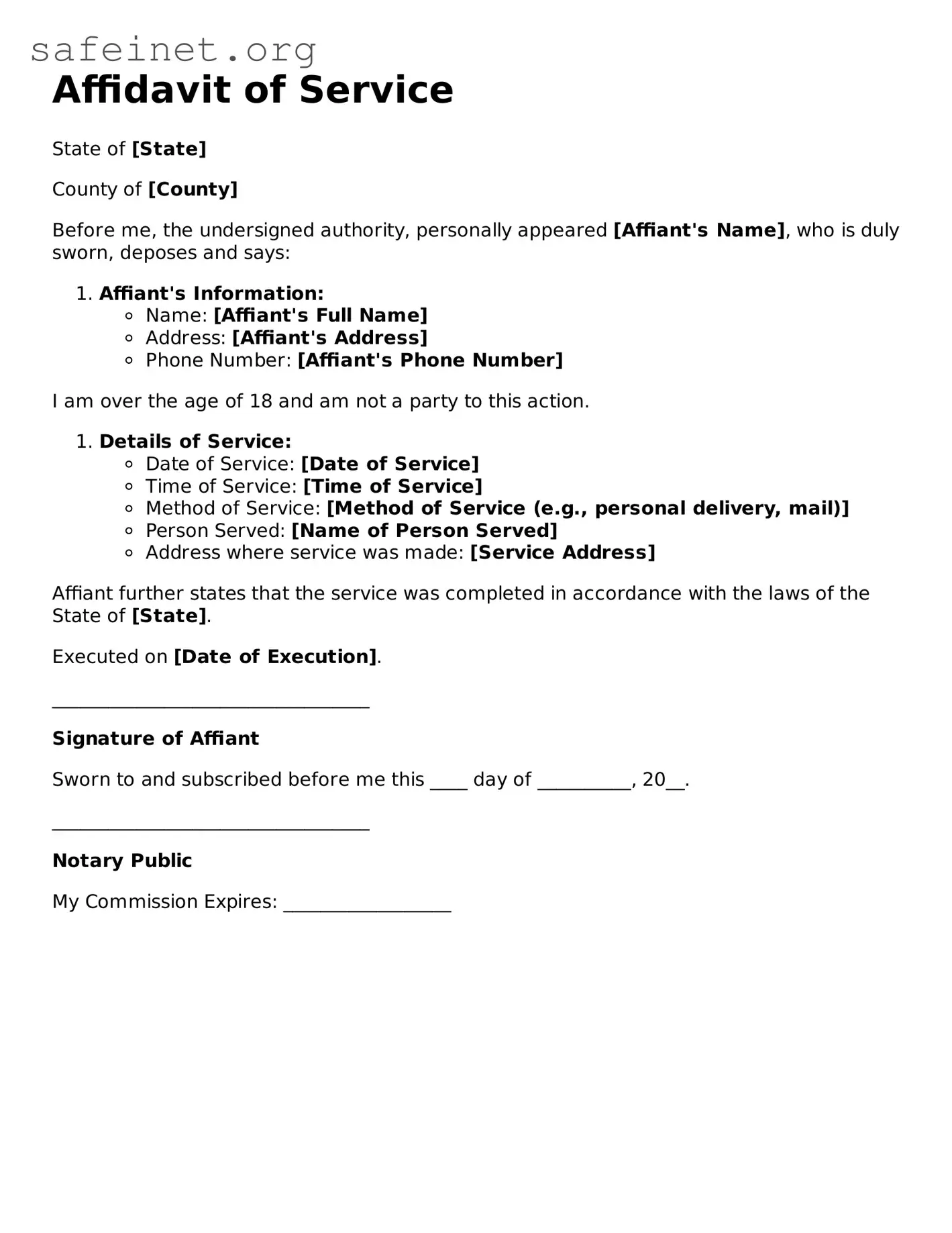The Affidavit of Service is similar to a Summons. A Summons is a document issued by a court that informs a defendant that a legal action has begun against them. It outlines the next steps the defendant must take, such as responding to a complaint. Like the Affidavit of Service, a Summons must be delivered to the defendant. However, while the Affidavit provides proof of delivery, the Summons initiates the legal proceedings.
Another document akin to the Affidavit of Service is the Proof of Service. This form serves the same purpose as an Affidavit of Service by documenting that legal documents were delivered. Both documents require details such as the date and method of service, but Proof of Service can sometimes be less formal. It may not always require the attestation from a notary, whereas the Affidavit often does.
The Notice of Motion shares similarities with the Affidavit of Service in that it notifies the recipient of a forthcoming court action. This document outlines what the moving party is requesting from the court. Just as the Affidavit indicates that documents were served, the Notice of Motion ensures that the other party is aware of the hearing date, time, and purpose.
An Order to Show Cause also resembles the Affidavit of Service. This document requests a court order and signifies that a party must explain to the court why a certain action should or should not be taken. Just like the Affidavit, proper service of an Order to Show Cause must be demonstrated for the court to consider any responses or arguments from the other party.
A Certificate of Service is similar in function, confirming that documents have been sent to all parties involved in a case. While the Affidavit of Service is often sworn and notarized, a Certificate of Service may require just a signature, making it a simpler way to show that legal documents were delivered. Both serve as essential parts of the litigation process.
The Subpoena is another document closely related to the Affidavit of Service. A Subpoena commands a person to appear in court or produce documents. Service of a Subpoena is necessary to ensure the person is aware of their requirement to appear or comply. Therefore, the Affidavit of Service can be used to confirm that someone received a Subpoena, demonstrating the document's importance in legal proceedings.
Additionally, the Demand for Discovery is akin to the Affidavit of Service since it compels the other party to provide information relevant to the case. Similarly, proof that this Demand was served is vital, paralleling the need for the Affidavit of Service to confirm that legal communications were received. Both documents help maintain transparency in the legal process.
Finally, the Notice of Claim is comparable to the Affidavit of Service in that it begins a legal action, particularly in cases against government entities. This notice must be served to the appropriate officials to inform them of the claim. Just as the Affidavit verifies that notice was properly served, this document ensures accountability and adherence to statutory requirements.
